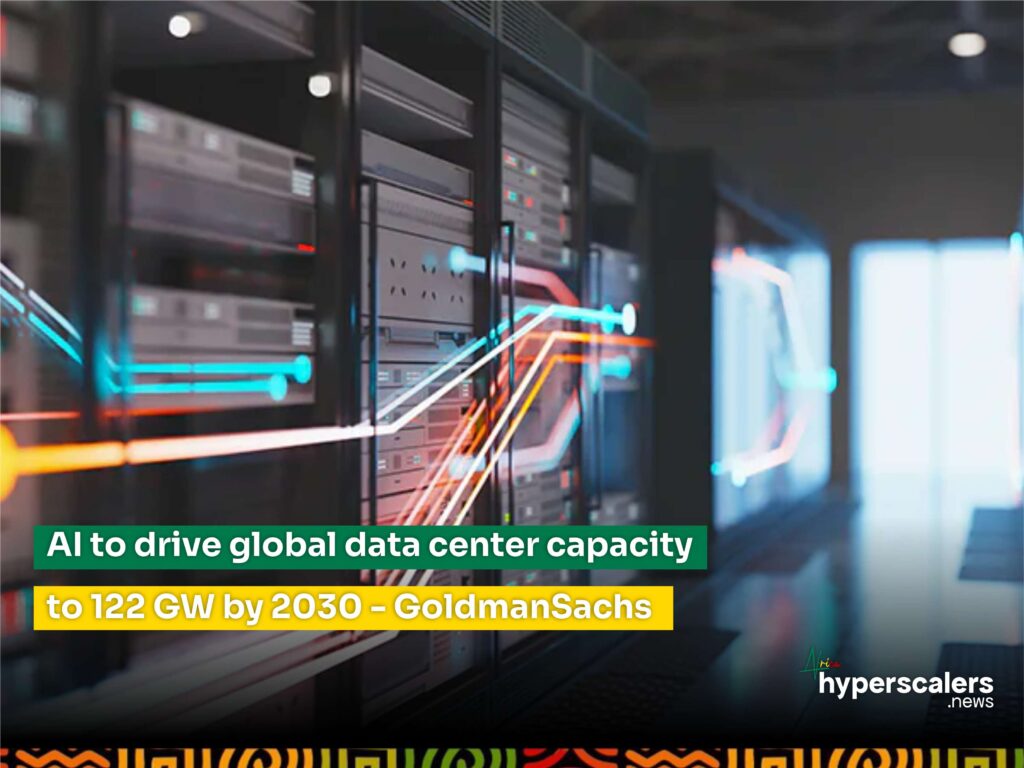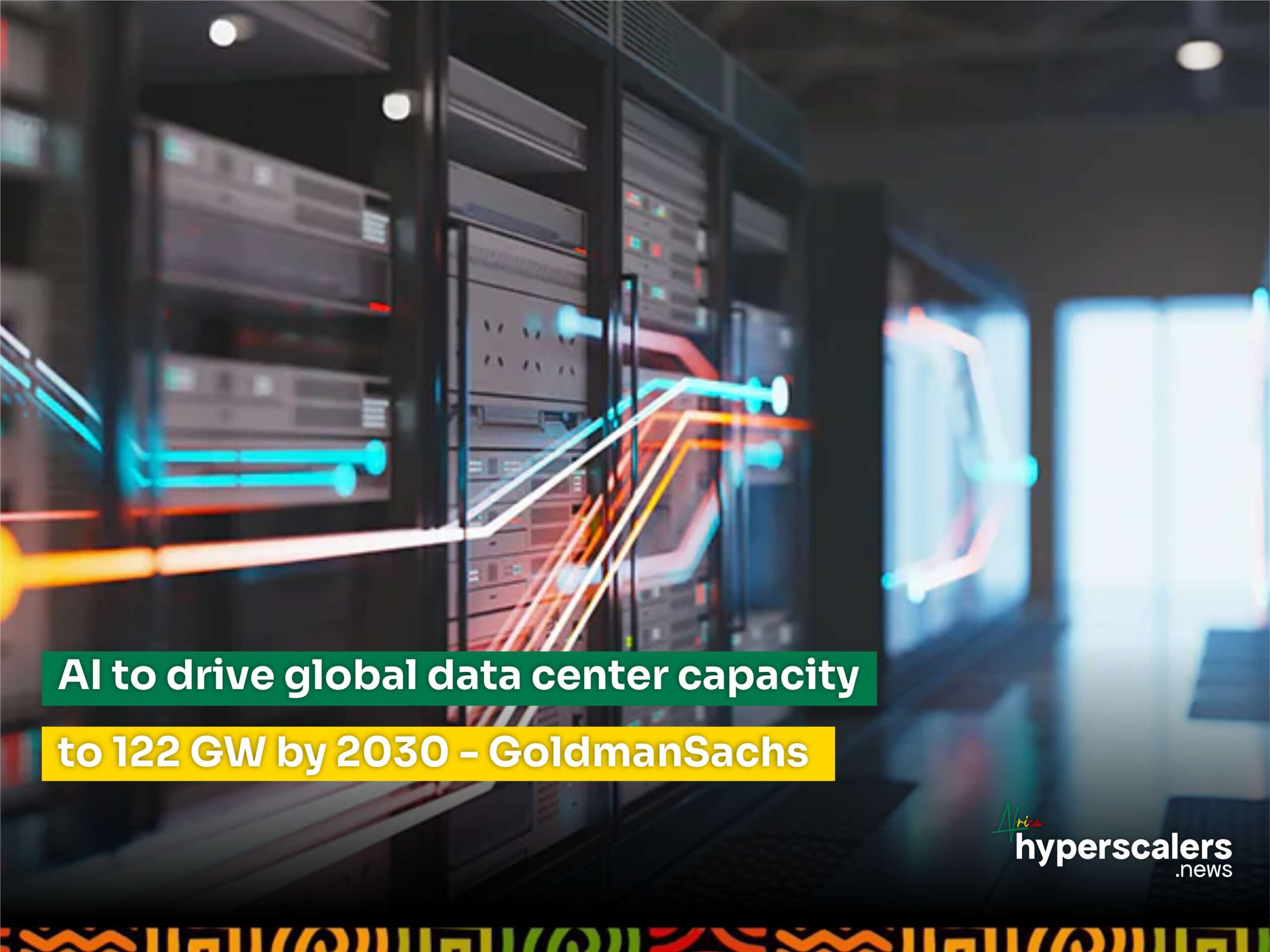The surge in interest surrounding generative artificial intelligence (AI) has sparked a competitive race to develop the technology, leading to a growing need for high-density data centers and a substantial increase in electricity consumption to power them.
Goldman Sachs Research forecasts that global power demand from data centers will rise by 50% by 2027 and potentially by as much as 165% by the end of the decade, compared to 2023 levels. James Schneider, a Senior Equity Research Analyst covering U.S. telecom, digital infrastructure, and IT services, wrote in the team’s report, “Recent Chinese developments, particularly the AI model DeepSeek, have raised concerns regarding the returns on current and projected AI investment. However, many questions remain regarding DeepSeek’s training, infrastructure, and scalability.” Schneider adds, “In the long run, if we see efficiency driving lower capex levels (from either hyperscalers or new investment plans from new players), this would mitigate the risk of long-term market oversupply we see in 2027 and beyond – which we think is an important consideration that could drive more durability and less cyclicality in the data center market.”
On the demand side, hyperscale cloud providers and other companies are developing large language models (LLMs) designed for natural language processing and understanding. These models require training on vast datasets, using power-intensive processors.
On the supply side, hyperscale cloud providers, data center operators, and asset managers are investing heavily in building high-capacity data centers.

As a result, Goldman Sachs Research predicts that the balance between data center supply and demand will tighten in the coming years. The occupancy rate of this infrastructure is projected to rise from around 85% in 2023 to a peak of over 95% by late 2026. Afterward, a moderation is expected in 2027 as additional data centers become operational, and AI-driven demand growth slows.
Power Demand for AI in Data Centers
Currently, Goldman Sachs Research estimates the global power usage of data centers to be around 55 gigawatts (GW). This figure is divided into cloud computing workloads (54%), traditional business workloads like email and storage (32%), and AI workloads (14%).
By 2027, the researchers project that power demand will rise to 84 GW, with AI accounting for 27% of the total, cloud computing dropping to 50%, and traditional workloads falling to 23%. However, this baseline estimate could be altered by a slower-than-expected adoption of AI-driven work and AI monetization. In such scenarios, demand may diverge from the baseline by 9-13 GW.
Global Data Center Supply Landscape
The global data center market capacity is currently around 59 GW. Approximately 60% of this capacity comes from hyperscale cloud providers and third-party wholesale operators, while the rest belongs to corporate and telecom-owned data centers.
AI-dedicated data centers, designed specifically for AI workloads with higher power density and additional cooling hardware, are emerging as a new class of infrastructure. These centers are typically owned by hyperscalers or wholesale operators.
Asia Pacific and North America are leading regions in data center power and square footage, with key areas like Northern Virginia, Beijing, Shanghai, and the San Francisco Bay Area driving the demand due to their high compute requirements and substantial corporate campus activity.
The Growing Supply of Data Centers Worldwide
Goldman Sachs Research predicts that by the end of 2030, global data center capacity will reach approximately 122 GW. The share of this capacity provided by hyperscalers and wholesale operators is expected to grow to 70%, up from 60% today. While Asia Pacific has added the most supply over the last decade, North America has the most scheduled capacity to come online in the next five years.
Given the increased processing demands of AI, the power density in data centers is anticipated to rise as well, from 162 kilowatts (kW) per square foot to 176 kW per square foot by 2027. These figures exclude overhead power requirements for cooling and other data center infrastructure functions.
As Schneider notes, “Data center supply — specifically the rate at which incremental supply is built — has been constrained over the past 18 months. These constraints stem from the inability of utilities to expand transmission capacity due to permitting delays, supply chain bottlenecks, and the high cost and time required to upgrade infrastructure.”
Additional Investment in Utility Infrastructure
To meet the rising demand for power from data centers, the electric grid will require significant upgrades. Goldman Sachs Research estimates that approximately $720 billion in grid investments will be needed by 2030. Schneider further warns, “These transmission projects can take several years to permit and then several more to build, creating another potential bottleneck for data center growth if the regions are not proactive about this given the lead time.”
In Europe, a surge in demand from data centers is contributing to a resurgence in power needs after years of decline in the energy sector. A Goldman Sachs survey of utilities found a dramatic increase in the number of connection requests received by power distribution operators, largely driven by data centers.
Alberto Gandolfi, head of Goldman Sachs Research’s pan-European utilities team, states, “We estimate a potential 10-15% boost to Europe’s power demand, over the coming 10-15 years.” The firm also estimates a data center pipeline in Europe of about 170 GW, equivalent to roughly one-third of the region’s total power consumption.
Gandolfi adds that it remains unclear whether AI models like DeepSeek will have a positive or negative impact on Europe’s data center outlook, writing, “Yet we stress that around 35-40% of a hyperscaler’s energy consumption is from cooling, which would be similar across technologies.”
Investment Opportunities in Data Centers
As the data center market expands, Goldman Sachs Research anticipates a broader range of investment opportunities:
- Hyperscalers: With enterprises looking to integrate AI and machine learning tools into their tech stacks, hyperscalers stand to benefit as they advance through various infrastructure and application layers.
- Asset Managers: Companies that can raise long-term private capital to develop data center infrastructure will be in a stronger position compared to those with shorter investment horizons.
- Utilities: The expansion of the power grid will be crucial to meeting data center demand.
- Data Center Operators: Operators with significant assets serving both hyperscale cloud companies and large enterprise clients will be well-positioned to meet the anticipated global surge in demand.





